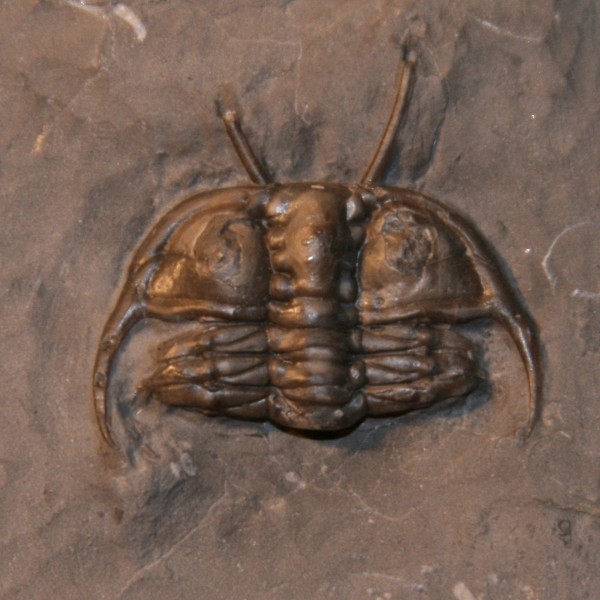
Specimen description :
- Almost complete trilobite.
- Enrolled on matrix
- Small granulations on the exosqueletton.
- Total size : 26 x 12 mm
- middle-upper Ordovician
- Cobourg Formation.
- Ontario, Canada
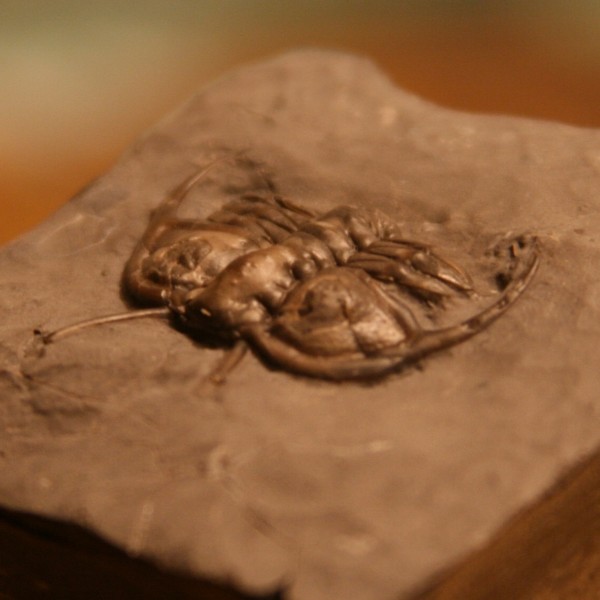
Leviceraurus mammilloides HESSIN 1988
Uncommon Trilobite from Canada, this trilobite has been described by Willian Hessin in 1988. It is a middle-upper Ordovician Trilobite from the Cobourg Formation, in the Ontario province. He named his finding from the latin levis (bald) and Ceraurus, in reference to reduced prosopon as compared to that of the related genus, Ceraurus.
The similarities with Ceraurus have been underlined by Hessin, as he precises that isolated pygidia and hypostomes of Leviceraurus can easily be confused with those belonging to some species of Ceraurus.
| 1936 | ?Ceraurus sp. 2 | COOPER & KINDLE 1936, p. 367, Pl. 53, fig 28 (only). |
| 1988 | Leviceraurus mammilloides | HESSIN W. A. 1988. p. 89, Pl. 2, fig. 1 - 6, p. 91, Pl. 3, fig. 1 - 4. |
 |
Specimen description :
|
|
|
Dorsal view of the specimen. |
Antero-lateral view. |
Diagnosis :
|
Order
|
Phacopida
|
SALTER 1864
|
Occurrence: Lower Ordovician (Tremadoc) to Upper Devonian (Famennian).
|
|
Sub-order
|
Cherirurina
|
HARRINGTON & LEANZA 1957
|
|
|
Family
|
Cheiruridae
|
HAWLE & CORDA 1847
|
|
|
Sub-family
|
Cheirurinae
|
HAWLE & CORDA 1847
|
|
|
Genus
|
Leviceraurus |
HESSIN 1988 |
|
|
Species |
mammilloides |
HESSIN 1988 |
|
Remarks :
The etymology of mammilloides comes from mammillae (nipples, latin) and oides (like, latin), in reference to tubercles on rostral plate.
Discussion :
To help in differential diagnoses, here a few diverging points :
- Ceraurus pleurexanthemus GREEN (type species for Ceraurus), which occurs with Leviceraurus, can generally be recognized by its coarser prosopon.
- Ceraurus possess a glabella which expands forward to the anterior lobe and an inflated anterior border which is clearly separated from an inflated anterior lobe by a relatively deep preglabellar furrow.
- Ceraurus mackenziensis LUDVIGSEN 1979 resemble Leviceraurus in prosopon and some cephalic details. However, these species have slightly coarser granules, the latter species possesses a nearly parallel-sided glabella like Leviceraurus, but differs in the lack of tubercles on glabella, a glabella that is clearly separated from the anterior border, eyes located very close to the posterior border, a cephalon broadly triangular in outline and a pygidium subtriangular in outline (excluding spines) with indistinct axial rings.
Complementary pictures :
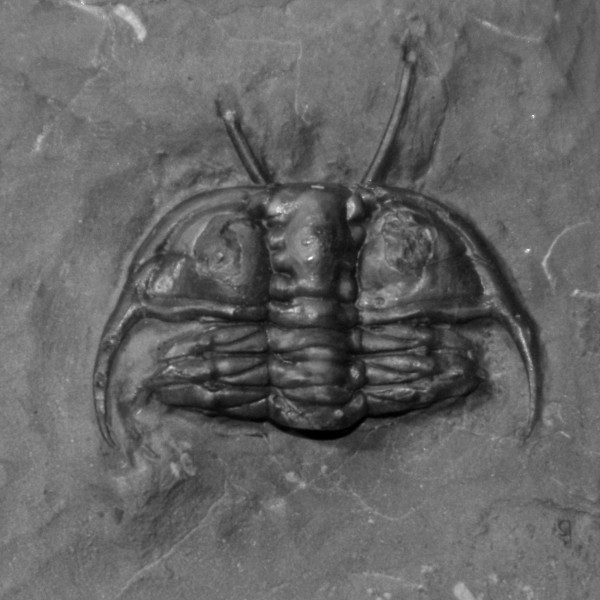 |
 |
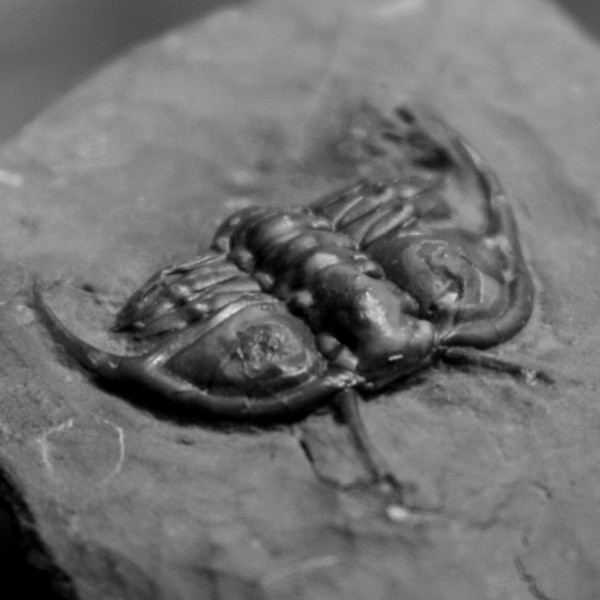 |
|
Prosopon with very fine granules. |
Prosopon with very fine granules. |
Faint tubercles on rostral plate. |
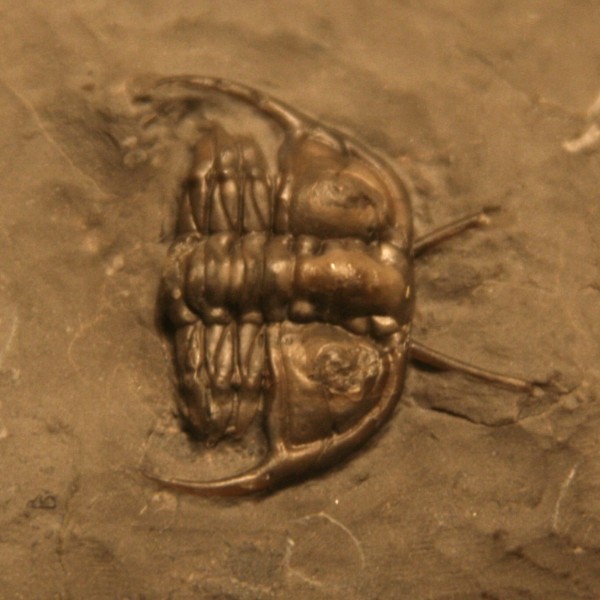 |
||
|
Prosopon with very fine granules. |
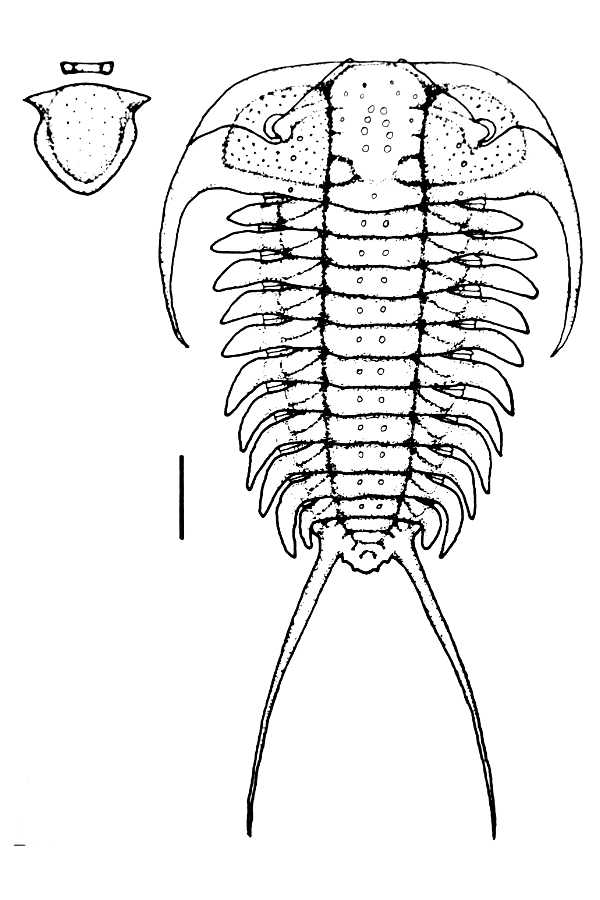 |
Synthetogram of Leviceraurus mammilloides after HESSIN 1988 |
References :
COOPER & KINDLE. New brachiopods and trilobites from Upper Ordovician of Percé, Québec. Journal of palaeontology 10: pp. 348 - 372.
HESSIN W. A. 1988. Leviceraurus. A new cheirurine Trilobite from the Cobourg Formation (Middle-Upper Ordovican) Southern Ontario, Canada. Journal of palaeontology 62 (1) : pp. 87 - 93.